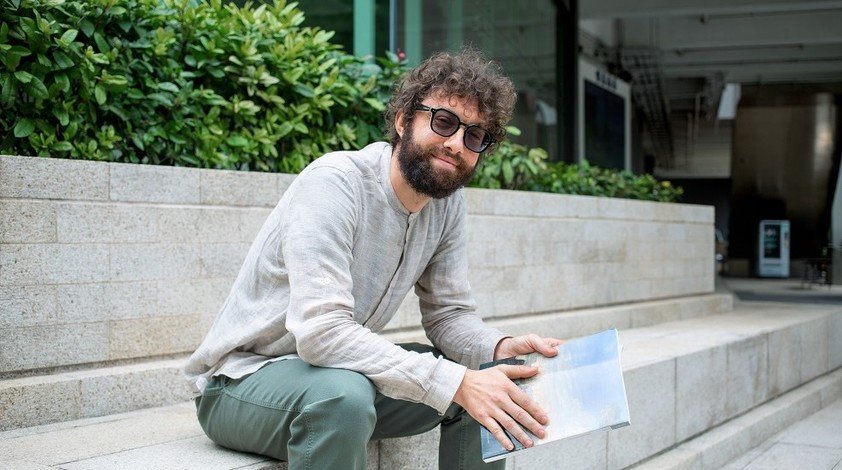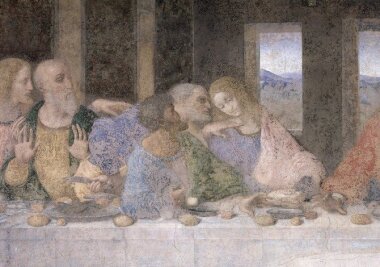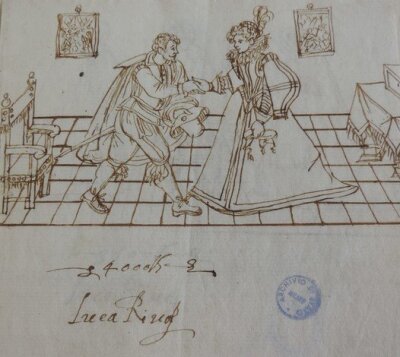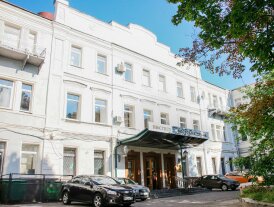
Talent 100 Series: Dr Angelo Lo Conte
Time-travelling through art

Dr Angelo Lo Conte, Assistant Professor, Academy of Visual Arts
A few years ago, Dr Angelo Lo Conte was visiting the state archives in Milan, Italy, when he came across an interesting document from the 17th Century. The rare manuscript included the last wishes of the deaf Milanese painter Luca Riva, but instead of taking the form of a traditionally written testament, it featured a number of drawings that illustrated how his inheritance should be distributed.
The unusual visual testament sparked Dr Lo Conte's interest in researching the interconnections between art and disability in Europe between the 16th and 17th Centuries. "I thought, perhaps Luca Riva was not the only prelingually deaf artist capable of achieving a remarkable success. As a consequence, I began looking at the careers of painters with hearing and speech impairments working in this period," says the Assistant Professor of the Academy of Visual Arts on his latest research project, "The colours of silence: untold histories of prelingually deaf painters in early modern Europe".
Painting a picture of artists with disabilities
A native Italian, Dr Lo Conte is an art historian specialised in the fields of Renaissance and Baroque art. His research on art and disability has received funding from the Research Grants Council’s Early Career Scheme 2020/21. Drawing inspiration from the visual arts, disability studies, social history, medical studies, philosophy, literary studies and archival research, he examines the ways in which the practice of art provided opportunities for prelingually deaf painters to cross the barriers created by their disabilities.
"In terms of accessibility, it is clear that a person with a hearing and speech impairment had to come from a relatively wealthy background to get the required artistic education and training," says Dr Lo Conte. To this end, similarities in terms of their affluent upbringing have been found among prelingually deaf painters working across Europe, including the Italians Luca Riva, Ercole Sarti and Giuseppe Badaracco, the Dutchman Hendrick Avercamp, and the Spanish aristocrat Juan Fernandez de Navarrete, a court painter to King Philip II of Spain.

A link to Leonardo da Vinci
The project has also revealed a close link between the perception of painters with disabilities and social progress. According to Dr Lo Conte, there was a remarkable shift in the understanding of disability in Western societies starting in the late 16th Century. It was around this time that the scientific revolution began, with modern ideas emerging and developing drastically. "Physicians started to approach disability in a scientific way, overturning the previous belief that prelingually deaf people were unable to learn," he says, adding that the new perception of these disabilities encouraged attempts from physicians and scholars to advocate education for people with hearing impairments.
Knowing that artistic education was not precluded even five or six centuries ago should encourage the development of pedagogical practices aimed at creating a larger involvement of students with disabilities in art programmes.
Dr Angelo Lo Conte
Academy of Visual Arts
A surprising finding from his investigation comes from a series of writings by Leonardo da Vinci, which include various annotations on deafness and muteness. Leonardo was an acquaintance of Renaissance prelingually deaf artist Cristoforo de Predis. Their friendship allowed Leonardo to witness first-hand how art represented an invaluable form of expression for people with hearing and speech impairment. In appreciation of the artistic acumen of prelingually deaf people, Leonardo praised their ability to observe and understand human gestures, concluding that they understood art better than those who could hear. Not only did Leonardo's thoughts reveal his understanding and conceptualisation of disability, they also offer insights on the working method he used to execute the famous Last Supper, which was completed in 1498 at the Church of Santa Maria delle Grazie in Milan.
Dr Lo Conte hopes that his research can contribute to our modern understanding of the relations between disability and the practice of art. He says, "Knowing that artistic education was not precluded even five or six centuries ago should encourage the development of pedagogical practices aimed at creating a larger involvement of students with disabilities in art programmes." He further points out that it is important to challenge the misconception that people with disabilities were discouraged from pursuing careers in the visual arts in the past. By giving students with hearing and speaking impairments visible success stories, it would enhance their self-esteem and foster their self-confidence.

Travelling back in time
Before joining HKBU, Dr Lo Conte was the inaugural ACIS Research Fellow at the Rosand Library and Study Centre in Venice and held postdoctoral positions at the Ian Potter Museum of Art and the Australian Institute of Art History in Melbourne. He sees artworks and ancient documents as windows into the past, as they allow him to understand and interpret what came before. "When I research, surrounded by ancient documents, I get a sense of being in a world that has been preserved there. Sometimes I'm the first person in a few hundred years to read a document, and that is always very exciting," he says. "Studying works of art enables me to time travel and look at the past."
To understand the context of an artwork, he incorporates ideas from a variety of disciplines, ranging from social history to economics, from sciences to literature. This interdisciplinary approach enables him to put together information on the inner dynamics informing past societies. "I try to look at artistic creation as a way of investigating the past. In general, art reflects the period in which it was made. It is often difficult to understand artworks without understanding the society in which they were created," he says.
As a teacher, he hopes to instil in students a love of art and history. To this end, he is always interested in implementing innovative pedagogical approaches. "During the pandemic, art museums have been building up their online resources, providing opportunities to incorporate this content into the teaching of art history," he says. "In the future, we may experiment with the use of virtual reality technology so that students can go on immersive virtual tours. This would create an even more engaging learning experience."
Previous News



